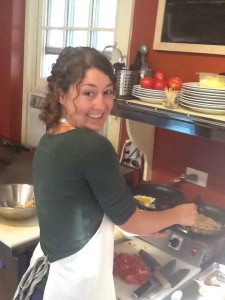 Exciting things are happening here… of course that means we’re really busy!
Exciting things are happening here… of course that means we’re really busy!
I’ve found part-time work at the Country Store and Café in West Townshend VT. That means we have to work out the transition between me being a WWOOFer who trades 30 hours of farm work for room and board, and me as a person paying some rent to live here and doing a few farm-related chores each week.
At this time of year in Vermont the animals are devoting what energy they have to staying warm.
When the hens do lay eggs, they’re often frozen before we get to them. Some chickens have even developed frost-bite, so we stopped opening the doors for them in the mornings – they’re literally cooped up. Ian feeds them twice a day and changes out frozen water bowls with fresh just as often.
We’re now making use of the stockpile of hay in the barn and the leaves we bagged during the fall, which has a dual-purpose – as new bedding for chicken coops and a nutritious supplement during a time when they can’t go out and forage on bugs and grass.
Chores are much more difficult in winter than other times of the year, but we know that our work will pay off in the spring when the animals give more and require less.
I love this photo because it exemplifies the mood of the animals during feeding time. If you have some hay or a bucket of feed they all come running. 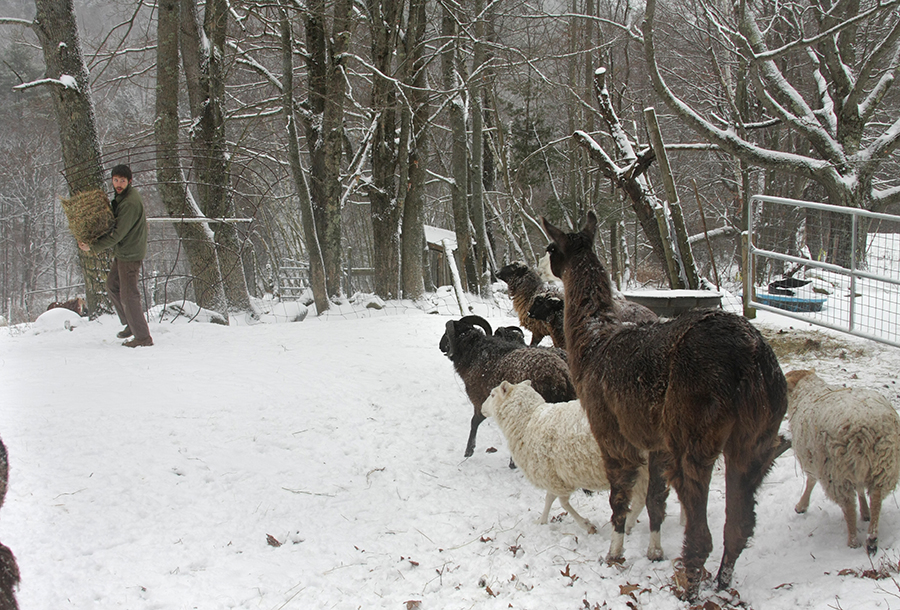
The black ram (Yo) is really aggressive and you can see Ian fearing for his safety… It’s best not to turn your back on him, especially in this season when the rams are in their rut, or breeding time.
In the winter they especially look forward to feeding time and now that we have the sheep, donkeys, and llamas all in one pasture, it’s a funny sight to see the whole crowd vying for some food.

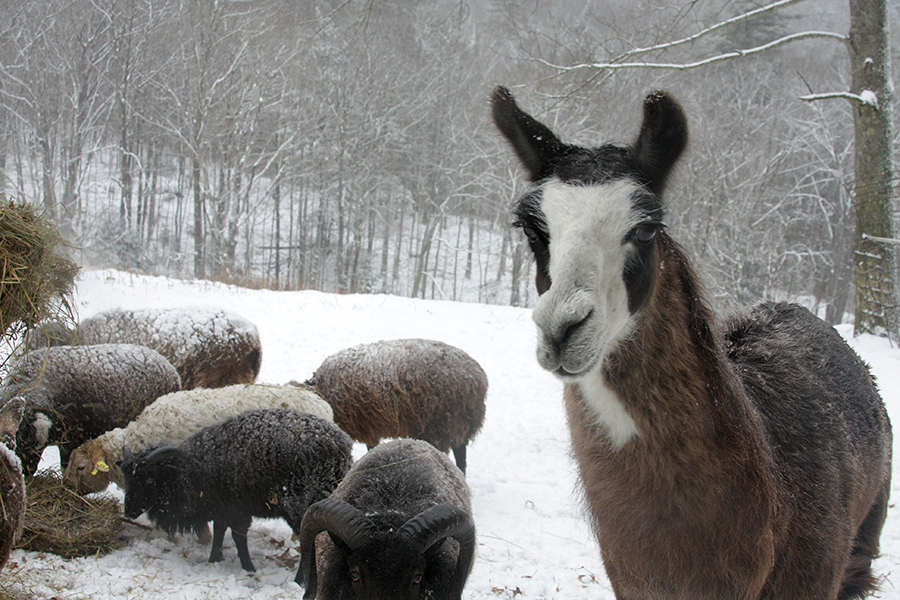
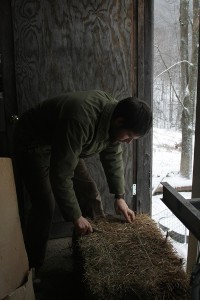

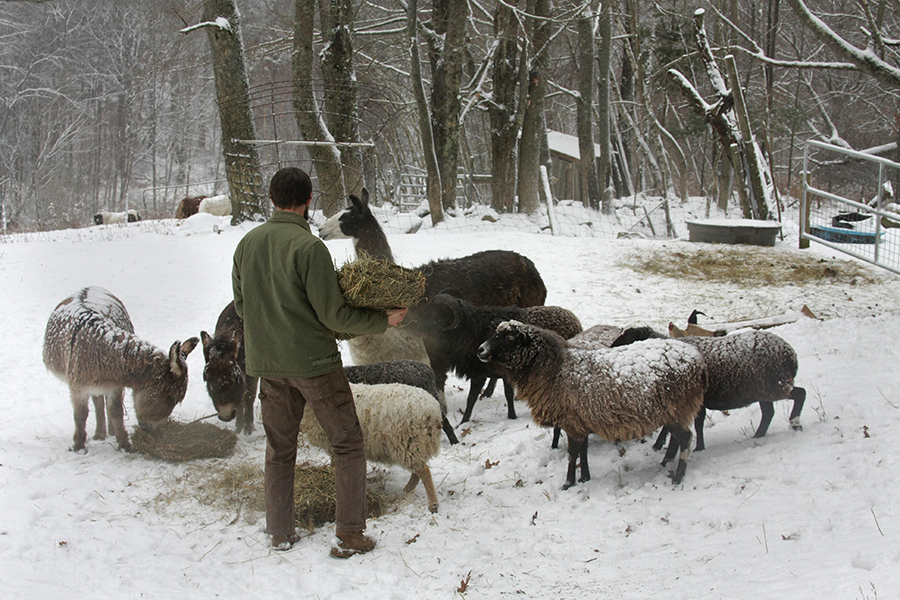
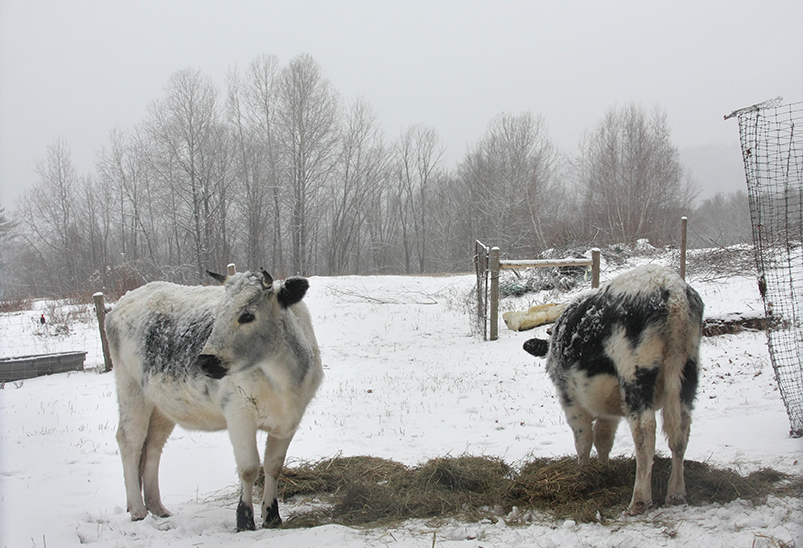
I’m not sure how much it costs to sign up as a host under WwoofUSA, but if you find it too expensive you might consider looking for volunteers at ATTRA (attra.ncat.org) – a site for finding interns or internships in sustainable farming. Last I checked it was free, and the same deal as wwoofing. Interns can be paid or unpaid, for whatever length of time, any time of year, and whatever accomodations you have available, whether that be a spot for them to pitch a tent or an extra room in your house. Just be sure to make your expectations clear, and let them know what you need from them and what they can expect to get in return. For most wwoofers the experience (and a few meals a day) is enough.
I know and remember well the chores of feeding pigs and chickens all winter. I had to light a fire under the 50 gal cast iron kettle to heat up the pig food and then could melt snow for chickens if the stream was froze over. What fun when I was much younger. I really appreciate the WOOF workers. Wish I could afford to have one help me . I have a small market garden I work and sell at 3 markets.